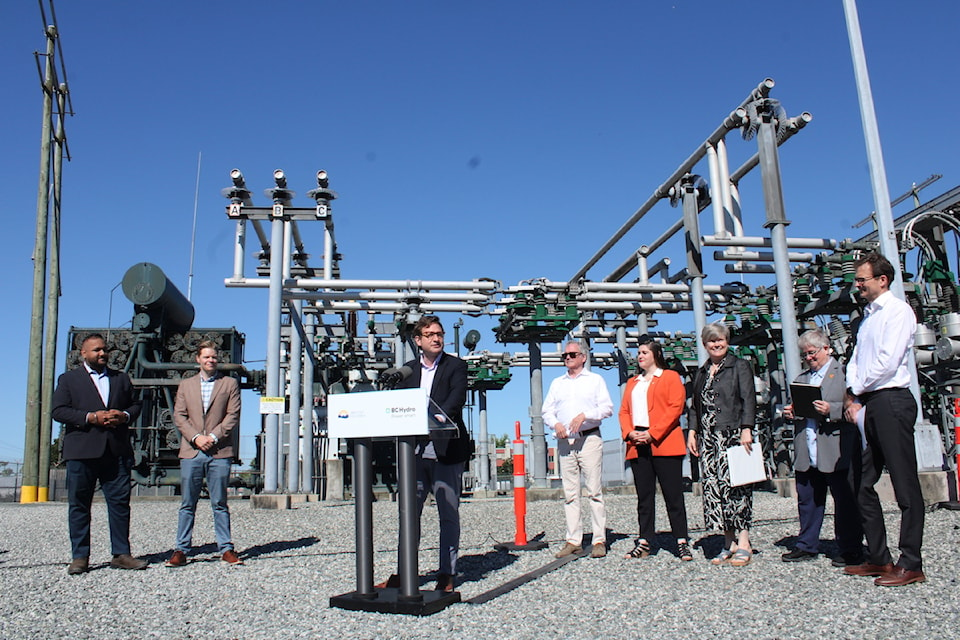Vancouver Island communities are set to receive $3.2 billion in new power lines, electrical stations and hydro infrastructure as B.C.'s rolls out $36 billion worth of upgrades province-wide over the next decade.
Provincial and municipal politicians gathered at the Horsey Substation in Victoria on Friday (July 5) to announce the funding, which they said will support the Island's rapidly growing population and the public's desire for clean energy.
Highlighting the investments is a new substation in Langford and the replacement of end-of-life underground cables in Greater Victoria's core communities. With Langford's population expected to double to 100,000 over the next 20 years, officials said the new substation will be able to power up to 70,000 new homes and will be the second largest in the Capital Region.
Aging underground cables servicing Victoria, Esquimalt and Saanich will be replaced by 2028 – work the province says will increase energy capacity by enough to power more than 100,000 new homes.
The funding will also include upping the capacity of power lines in several high-growth areas across the South Island and in Nanaimo. Three Campbell River hydro dams will undergo seismic upgrades over the next six years, a move BC Hydro says will help keep downstream communities safe and one that will ensure the area has access to reliable power.
On the North Island, work underway to upgrade the system supplying electricity to Port Alice aims to help BC Hydro respond to outages as well as connect more, and larger, customers to power. That area will also see more work to remove vegetation that falls and causes outages during storms.
People being able to take it for granted that power is going to be there when they need is the goal for BC Hydro, the agency's CEO Chris O'Riley said.
"As more and more people switch from fossil fuels to clean, renewable electricity, we are seeing unprecedented interest and demand for power and we are investing to ensure our system is able to meet those demands," O'Riley said.
Energy, Mines and Low Carbon Innovation Minister Josie Osborne said the improvements are needed because Greater Victoria's population is growing fast, B.C. is attracting clean industries and a record number of people are switching to electric vehicles and heat pumps. Overall demand for electricity is expected to increase by around 15 per cent by 2030.
"Powering our future is our plan to build an economy that's powered by clean energy, creates new jobs and opportunities for people and keeps the cost of electricity affordable," she said.
BC Hydro is also studying the possibility of integrating large-scale batteries on the Island to increase capacity and the agency will be replacing undersea transmission cables that transport electricity from the mainland. The hydro provider recently put out its first "call for power" in 15 years as it aims to procure new electricity generation sources that would add about five per cent of the province's current supply to the grid.
Victoria Mayor Marianne Alto said the capital city is seeing extraordinary growth and the upgrades will support residents who expect clean energy choices that allow them to take part in addressing climate change.

